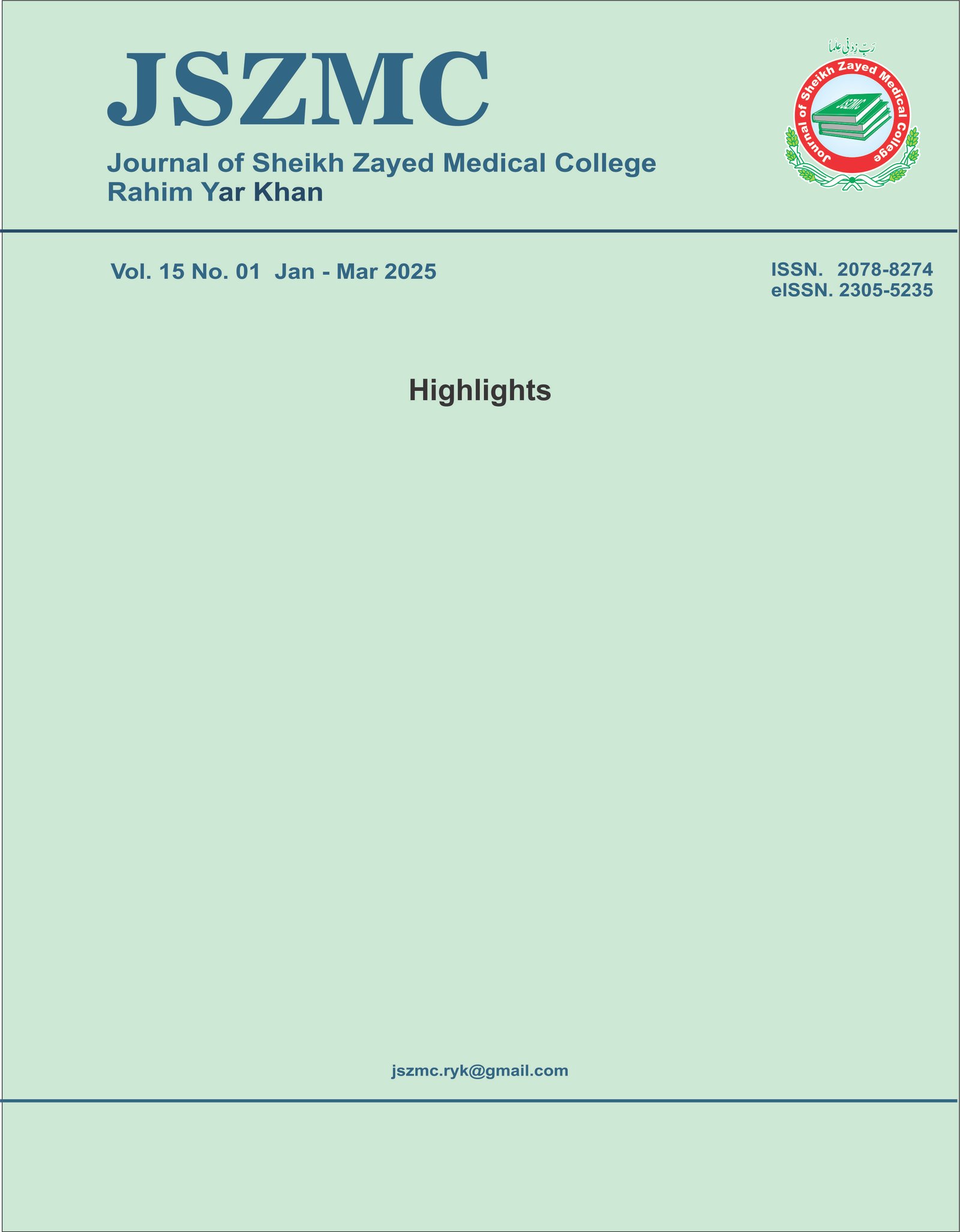Frequency of undiagnosed Hypertension in Emergency Department patients presenting with Headache
DOI:
https://doi.org/10.47883/jszmc.v15i01.293Keywords:
Blood pressure, Emergency department, Headache, Hypertension, Opportunistic screening, Undiagnosed hypertensionAbstract
Background: Hypertension is a leading risk factor for cardiovascular diseases, with almost half unaware of their condition. Emergency departments (ED) often serve as the first point of contact for patients with non-specific complaints like headache, yet BP screening is rarely integrated into acute care workflows. Objective: To determine the prevalence of undiagnosed hypertension in adults seeking emergency care for headache and evaluate demographic and clinical correlates, including age, BMI, and headache type. Methodology: A cross-sectional study was conducted at Bahawal Victoria Hospital, Bahawalpur, from June to December 2024. A total of 323 adults presenting with headache (excluding secondary causes) were enrolled. Blood pressure (BP) was measured twice during the visit, with undiagnosed hypertension defined as systolic ≥140 mmHg and/or diastolic ≥90 mmHg. Data on age, gender, BMI, smoking history, and headache classification (ICHD-3 criteria) were collected. Multivariable logistic regression identified independent predictors. Results: Of 323 participants, 78 (24.1%) had undiagnosed hypertension, with 66.7% classified as Stage 1 and 33.3% as Stage 2. Age >40 years was strongly associated with undiagnosed hypertension (37.5% vs. 14.8%; *p < 0.001*), as was BMI ≥25 kg/m² (27.5% vs. 21.6%; *p = 0.012*). Logistic regression confirmed age >40 years (aOR = 2.3; 95% CI: 1.5–3.4) and BMI ≥25 kg/m² (aOR = 1.8; 95% CI: 1.1–2.6) as independent predictors. No significant differences were observed by gender or headache type. Conclusion: One in four ED patients with headache had undiagnosed hypertension, particularly those aged >40 years or overweight. Routine BP screening during ED visits for headache could intercept silent cardiovascular risks and reduce preventable morbidity.


